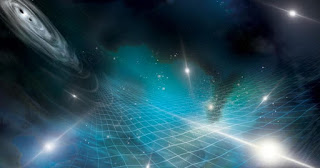The background disturbances revealed by NANOGrav promise to enhance our comprehension of the formation and propagation of gravitational waves. They can serve to investigate supermassive black hole mergers, occurrences that span millions of years. Scientists conjecture these mergers are commonplace in most galaxies and play a crucial role in their evolution.
Gravitational waves
The findings, published in a collection of papers in The Astrophysical Journal Letters, are derived from 15 years of scrutiny by the North American Nanohertz Observatory for Gravitational Waves (NANOGrav) and a team of 190 scientists from the US and Canada. NANOGrav utilized data from radio telescopes like the Arecibo Observatory in Puerto Rico, the Green Bank Telescope in West Virginia, and the Very Large Array in New Mexico, to monitor 68 pulsars that functioned as a network of markers on the slow-moving sea of gravitational waves.
Gravitational waves' impact on pulsars is incredibly subtle and challenging to detect, but persistent data collection over the years has yielded results. We now have a novel method to explore the occurrences when gargantuan black holes in galactic cores commence a slow, inevitable death spiral. This process is considered commonplace in numerous galaxies, with various instances observed in different stages. We are at last beginning to discern one of the most significant stages.
Gravitational waves were initially theorized by Albert Einstein in 1916, but their direct detection wasn't achieved until nearly a century later. In 2015, the LIGO interferometer detected waves from a pair of distant colliding black holes. LIGO senses gravitational waves with a higher frequency compared to those recorded by NANOGrav (NANOGrav's moniker originates from its ability to detect lower frequency gravitational waves in the nanohertz range, or one cycle every few years).
Gravitational frequencies vary according to the size and speed of black hole pairs. Higher frequencies are generated by smaller black holes nearing collision, while lower frequencies are emitted by massive black holes in galaxy cores, with eons to collision.
A universal background
NANOGrav's studies suggest the detection of a collective hum of gravitational waves from various merging supermassive black holes, akin to background noise at a party, unlike LIGO's focus on the equivalent of individual screams.
NANOGrav's pulsar-timing array, a network of pulsars formed from massive star explosions, emits beams of light at precise intervals, comparable to atomic clocks.
Gravitational waves cause spacetime to stretch and compress, altering the Earth-pulsar distance and the timing of pulsar light flashes. The science team developed software to compare pulsar pair timings, looking for the gravitational wave hum.
The gravitational wave-induced timing shift varies based on pulsar proximity, a pattern theorized by Ron Hellings and George Downs at JPL in the 1980s. It's like observing ocean ripple patterns from supermassive black hole pairs, with Earth and pulsars as buoys, measuring ripple changes.
Observing this gravitational wave background required ruling out confounding effects like pulsar motion, galactic free electron perturbations, radio observatory clock instabilities, and the Solar System center's precise position, determined with help from NASA's Juno and Cassini missions.
Future NANOGrav results will include the Canadian CHIME telescope and Caltech's Deep Synoptic Array-2000 or DSA-2000, planned to start operation in Nevada in 2027. Scientists aim to decipher the mysteries of supermassive black hole mergers, including their prevalence, what causes them, and their contributing factors.


Post a Comment